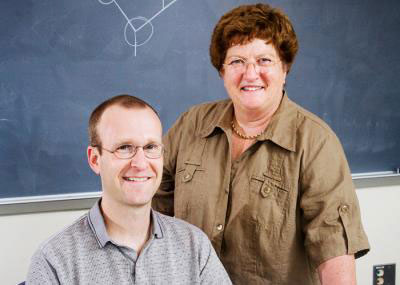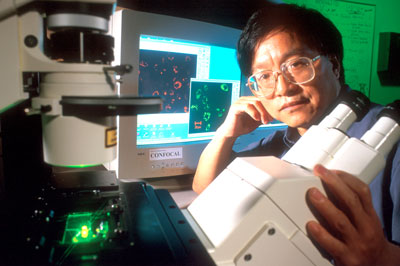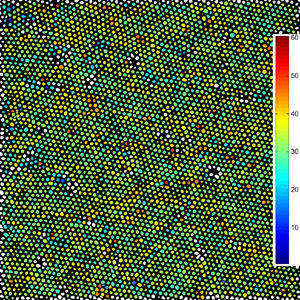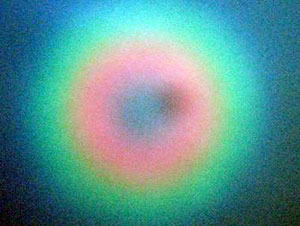 Researchers have built a computer model of the crowded interior of a bacterial cell that - in a test of its response to sugar in its environment - accurately simulates the behavior of living cells.
Researchers have built a computer model of the crowded interior of a bacterial cell that - in a test of its response to sugar in its environment - accurately simulates the behavior of living cells.
Mar 30th, 2011
Read more
The two sides met until late Monday night to discuss updating novel food rules, but were unable to reach agreement on clone-derived food and nanotechnology.
Mar 30th, 2011
Read more
 Physicians and engineers within a new center devoted to pediatric nanomedicine will develop targeted, molecular-sized nanoparticles as part of a unique approach to treating pediatric diseases. Specific focus areas will include pediatric heart disease and thrombosis, infectious diseases, cancer, sickle cell disease and cystic fibrosis.
Physicians and engineers within a new center devoted to pediatric nanomedicine will develop targeted, molecular-sized nanoparticles as part of a unique approach to treating pediatric diseases. Specific focus areas will include pediatric heart disease and thrombosis, infectious diseases, cancer, sickle cell disease and cystic fibrosis.
Mar 30th, 2011
Read more
Pittcon 2011 reports that 17,098 attendees participated in the annual Conference and Exposition, which was held in Atlanta, Georgia, March 13-18, 2011.
Mar 30th, 2011
Read more
Funds will expand nanoelectronics industry in Finger Lakes Region and create high-tech jobs.
Mar 30th, 2011
Read more
Darmstadt researchers plan to selectively control the properties of underlying materials utilizing thin, "smart", plastic films. For example, paper might be induced to release printing inks, if necessary, chemical reactions might be started and interrupted as required, or medications might be tailored to affect only certain parts of the body.
Mar 30th, 2011
Read more
Could electronic components made from human blood be the key to creating cyborg interfaces? Circuitry that links human tissues and nerve cells directly to an electronic device, such as a robotic limb or artificial eye might one day be possible thanks to the development of biological components.
Mar 30th, 2011
Read more
 Researchers from North Carolina State University have investigated the viability of a technique called "spincasting" for creating thin films of nanoparticles on an underlying substrate - an important step in the creation of materials with a variety of uses, from optics to electronics.
Researchers from North Carolina State University have investigated the viability of a technique called "spincasting" for creating thin films of nanoparticles on an underlying substrate - an important step in the creation of materials with a variety of uses, from optics to electronics.
Mar 30th, 2011
Read more
Scientists in the UK and US, including researchers at Arizona State University, have been awarded funding to improve the photosynthetic process as a means of producing renewable fuel.
Mar 30th, 2011
Read more
The Research Council of Norway's Large-scale Programmes Functional Genomics (FUGE) and Nanotechnology and New Materials (NANOMAT) are a success, according to the recently-concluded external evaluations of the two programs.
Mar 30th, 2011
Read more
A company developing a nanocomposite bone substitute claimed the $30,000 top prize in the inaugural Nanotechnology New Ventures Competition, sponsored by Purdue University and the University of Notre Dame.
Mar 30th, 2011
Read more
Innovations relating to mobility, energy, bionics, and nano- and microtechnologies will be presented by KIT at the 2011 Hannover Messe from April 4-8.
Mar 30th, 2011
Read more
Ein internationales Forscherteam hat eine Methode entwickelt, mit der Krebsstammzellen moeglicherweise daran gehindert werden koennen, sich zu vermehren und zu metastasieren. Der Trick: Nanomaterialien, die die Krebsstammzellen in Gewahrsam nehmen.
Mar 30th, 2011
Read more
 The invisible quantum link between pairs of photons can be tailored for specific applications.
The invisible quantum link between pairs of photons can be tailored for specific applications.
Mar 30th, 2011
Read more
Encapsulating antibiotics inside nanofibers, like a mummy inside a sarcophagus, gives them the amazing ability to destroy drug-resistant bacteria so completely that scientists described the remains as mere "ghosts".
Mar 30th, 2011
Read more
Speaking at the 241st National Meeting and Exposition of the American Chemical Society, an international team of scientists today described use of a new technique to see the paintings under the paintings of Rembrandt, Caravaggio, Rubens, and other 17th Century Old Master painters. The report was among almost two dozen studies presented as part of a symposium on chemistry and art titled "Partnerships and New Analytical Methodologies at the Interface of Chemistry and Art."
Mar 29th, 2011
Read more
 Researchers have built a computer model of the crowded interior of a bacterial cell that - in a test of its response to sugar in its environment - accurately simulates the behavior of living cells.
Researchers have built a computer model of the crowded interior of a bacterial cell that - in a test of its response to sugar in its environment - accurately simulates the behavior of living cells. 



 Subscribe to our Nanotechnology News feed
Subscribe to our Nanotechnology News feed